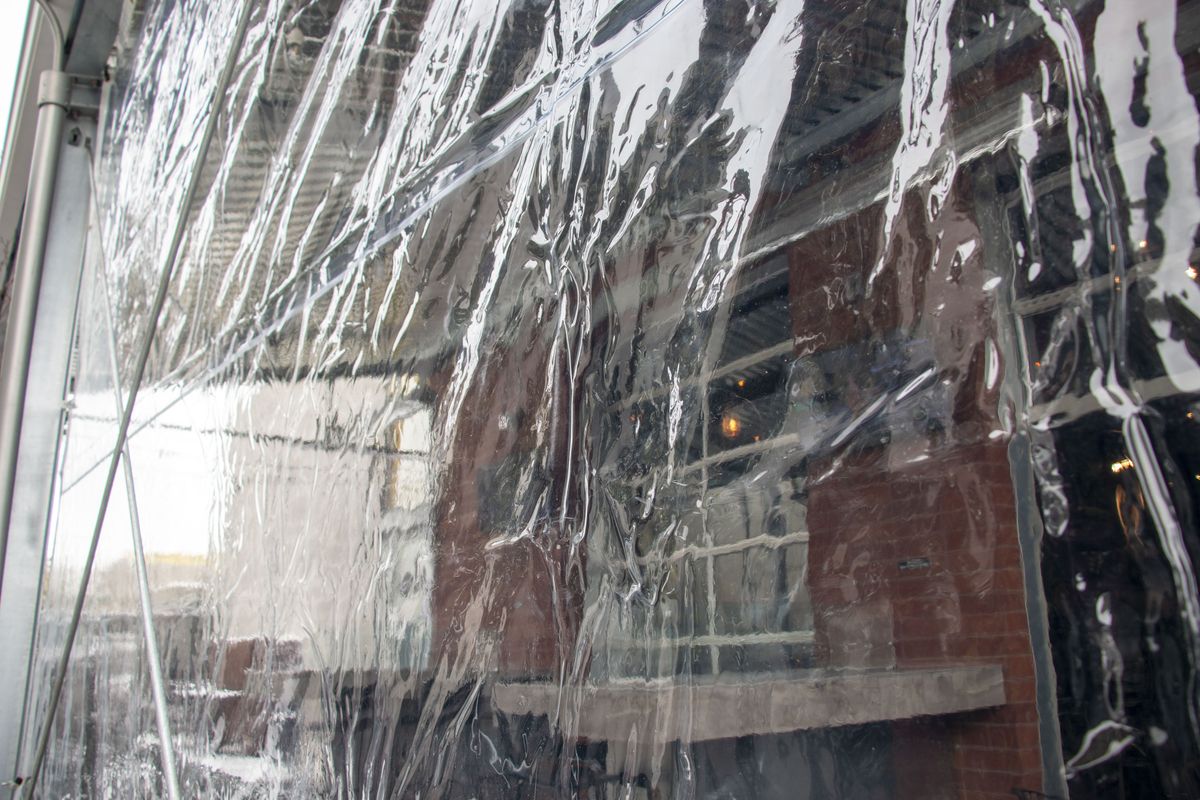Powered by Plants: It’s adapt or die for area restaurants, even vegan ones

Atania Gilmore knows a thing or two about redemption stories.
In 2015, she left her high-paying job in program management and did what every person making money and enjoying weekends tells you not to do: She opened a restaurant.
A vegan restaurant. In Spokane. She named it Allie’s Vegan Pizzeria & Cafe. She made pizza – and a lot of it.
Conventional wisdom (not to mention facts) tells us that 60% of restaurants don’t make it past their first year. After five years, 80%. Allie’s was well on its way to eschewing that trend, but Mother Nature had a different plan.
In June 2016, the restaurant went up in smoke. Literally.
But things have a way of working out sometimes, and little by little, the silver lining outgrew the smog. Gilmore sold food where and when she could at pop-up locations.
Then, a few months later, she was able to move her operation to the South Hill, along Grand Boulevard, where it remains.
That’s redemption No. 1. She’s still working on the second part, COVID-19 be damned.
“When this first happened in the middle of March, I could see this coming. I think we all could,” Gilmore said. “We were doing well to that point, but like most restaurants, margins are very thin. It doesn’t take much before you start to flounder.”
In Spokane and in cities across the country, perhaps no industry has been hit harder by COVID-19 than restaurants. Each week seemingly brings news of a local favorite eatery going under (while national fast-food chains thrive), no doubt spurred by reduced capacities in benefit of public health and consumers not doling out extra cash for a meal at home.
What that means for restaurant owners – already dealing in razor-thin margins on food with hardly a bar tab to lean on – is an age-old sentiment: adapt or die.
Maybe that means altering the menu. Or offering free delivery. Or, if you’re Cascadia Public House in north Spokane (and soon in Logan), adapting looks like plastic, steel and open doors.
“It’s been pretty great getting some people in here,” said co-owner Jordan Smith on Monday as he pushed open the giant, garage-style doors leading to the patio. “Luckily, we’ve been able to adapt and adjust.”
If you’ve not visited Cascadia in person for the past year, you’ve missed a lot. Like most restaurants, tables are scarce, deliberately spaced so that even if full, there’s plenty of room between diners.
And there’s a new curious addition: space heaters dotting the floors. Why? Because the patio doors are always open, “allowing outside air to easily exchange within occupied seating areas” in compliance with Gov. Jay Inslee’s updated restaurant seating requirements.
In addition to the new, slightly colder space, Cascadia recently installed a large patio roof, wrapped it all in plastic and filled it with heating lamps.
The changes, while extensive, have led to Cascadia reopening its dining room and offering seating at 25% capacity. That means Smith and crew have been able to rehire wait staff and bartenders.
“Twenty-five percent is still tough,” Smith said. “If we can get to 50%, we can get our heads above water and weather the storm.”
And while Allie’s remains mostly closed to the public for in-person dining, it’s been able to survive like a Rolling Stone: returning to the classics, with some new surprises.
Soon after the pandemic hit, Gilmore said business dropped drastically. Customers were recalibrating, and despite pizza being a perfect delivery food, they simply weren’t ordering enough to keep the restaurant afloat.
Understandable, too, as the entire country’s dining budget was squeezed with job losses and reduced employment.
So, with a new fire under her belt, Gilmore got creative. First, she set up a little shop of vegan hard-to-come-bys, since, as we all remember, simple things like rice, beans, flour and tofu – vegan staples – were scarce early in the pandemic.
Then, after talking with one of her cooks who hoped to retail organic produce he’d been growing, she set up a makeshift farmers market outside Allie’s front door.
The kicker? She included grab-and-go breakfast items, like burritos and sandwiches the shop used to sell during its wildly successful weekend brunch.
The market was originally intended to last through the end of summer once it became too cold to justify. It’s continued ever since.
“It was all about pivoting,” Gilmore said. “And pivoting quickly.”
Today, Allie’s continues to add items to the grab-and-go menu like “chicken” and waffles, bagels and doughnuts. The restaurant also features a rotating menu of Wednesday-only sandwiches such as banh mis, French dips and fried avocado subs.
Whether any of these additions will stay post-pandemic is anyone’s guess. But to restaurant owners far and wide, anything “post-pandemic” is a long leap in the right direction.
To Gilmore, surviving COVID-19 is redemption No. 2.
“I’m not even sure what business as usual even means anymore,” she said. “I mean, talk about your dreams going up in smoke.”